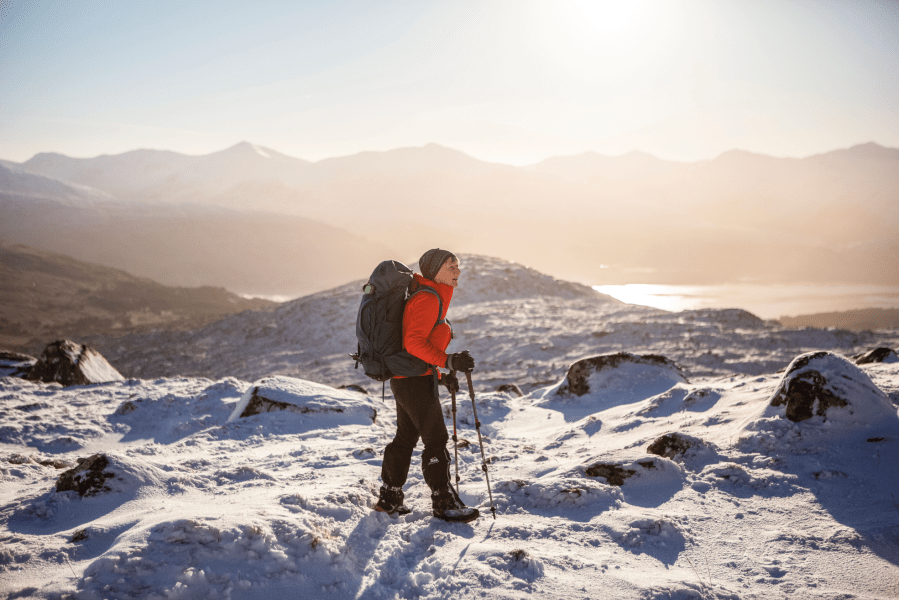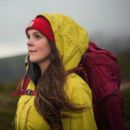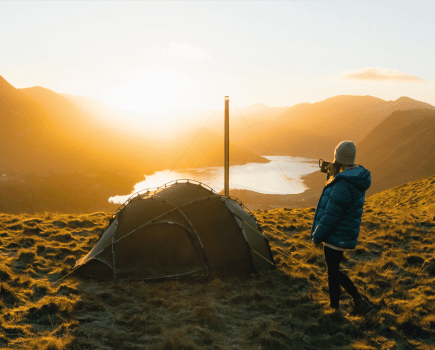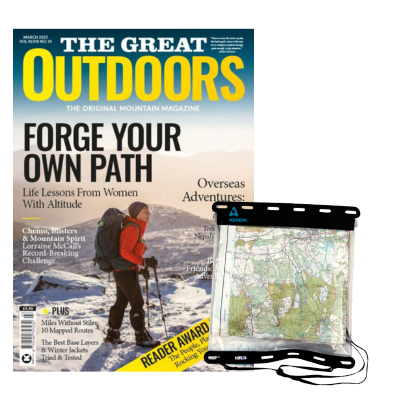Be inspired to forge your own path by the incredible stories of women who’ve climbed mountains and broken the ceiling to the world’s high places.
Women with a yen for the high places haven’t always had an easy time of it. When Lucy Walker became the first woman to ascend the Matterhorn in 1871, the Nuneaton Observer dismissed her achievement in one misogynistic sentence: “Mountain-climbing is no woman’s work.” It took another fifty years for female mountaineers to acceptably ditch their long skirts and a full century before they were finally admitted into the UK’s Alpine Club. But nothing – not exclusion, derision, social damnation or frozen petticoats – has ever quite managed to prevent them as they forge their own path.
Main image: Walking on Creach Beinn | Credit: Beth Chalmers
Joy is arguably the purest reason to climb mountains. Sometimes, though, we can lose sight of it in a culture that demands we do everything for the look rather than the feel of it. And perhaps that’s the greatest challenge facing a new generation of female hillwalkers. The message they’re receiving from an endless parade of social media images isn’t ‘get out here for the joy of it’. It’s: ‘Hey, come pose on a mountain top, it’ll do great things for your Instagram following’.
That’s why we still need amazing female role models; women who immerse themselves in the outdoors without feeling the need to document every moment of it. You’ll meet five of them in our lead feature this issue – as well as others elsewhere in the magazine – and you don’t have to share their gender to find their tales inspirational. As we celebrate International Women’s Day 2025, it’s a salutary fact that – despite huge advances in gender equality – men are still statistically far less likely to read books written by women than the other way round. We hope the stories you’ll read in this issue will baulk that trend, uniting all of us who take joy from being in the mountains.
Highlights of this issue:
- Five legendary mountain women share their advice for a new generation of hillwalkers
- Elise Wortley recounts her attempt on Mont Blanc in a bonnet and hobnail boots
- Serial ‘compleater’ and cancer survivor Lorraine McCall on her record-breaking Grahams round
- On the quieter side of the Nepalese Himalayas, Lydia Paleschi gets her own bucket list trek
- Artist and Mountain Burdz founder Tessa Simpson talks all things topography
- Meet the winners and commended people and places in the TGO Reader Awards 2025
- Find your outdoor tribe and learn how to meet like-minded hill folk
- Our experts map 10 simple yet beautiful stile-free routes
PLUS: Jim Perrin paints a portrait of Pen Llithrig y Wrach; honest and trusted reviews of the best insulated jackets and base layers; the latest news, outdoor events and initiatives from the mountains; and our reviews of new outdoor books to inspire.
Read on:
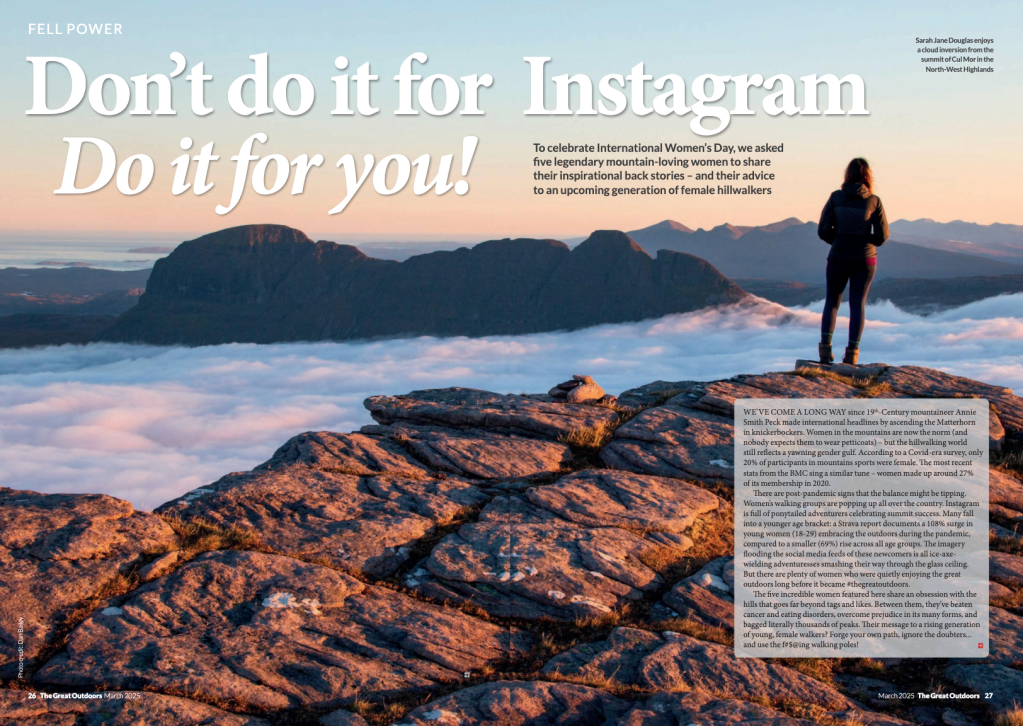
“Don’t do it for Instagram – do it for you!”: To celebrate International Women’s Day, we asked five legendary mountain-loving women to share their inspirational backstories – and their advice to an upcoming generation of female hillwalkers.
“We’ve come a long way since 19th-century mountaineer Annie Smith Peck made international headlines by ascending the Matterhorn in knickerbockers. Women in the mountains are now the norm (and nobody expects them to wear petticoats) – but the hillwalking world still has a yawning gender gulf. According to a Covid-era survey, only 20% of participants in mountains sports were female. The most recent stats from the BMC sing a similar tune – women made up around 27% of its membership in 2020. There are post-pandemic signs that the balance might be tipping. Women’s walking groups are popping up all over the country. Instagram is full of ponytailed adventurers celebrating summit success. Many fall into a younger age bracket – a Strava report documents a 108% surge in young women (18-29) embracing the outdoors during the pandemic, compared to a smaller 69% rise across all age groups. The imagery flooding the social media feeds of these newcomers is all ice axe-wielding adventuresses smashing their way through the glass ceiling. But there are plenty of women who were quietly enjoying the great outdoors long before it became #thegreatoutdoors. The five incredible women featured here share an obsession with the hills that goes far beyond tags and likes. Between them, they’ve beaten cancer and eating disorders, overcome prejudice in its many forms, and bagged literally thousands of peaks. Their message to a rising generation of young, female walkers? Forge your own path, ignore the doubters… and use the %$#@ing walking poles.”
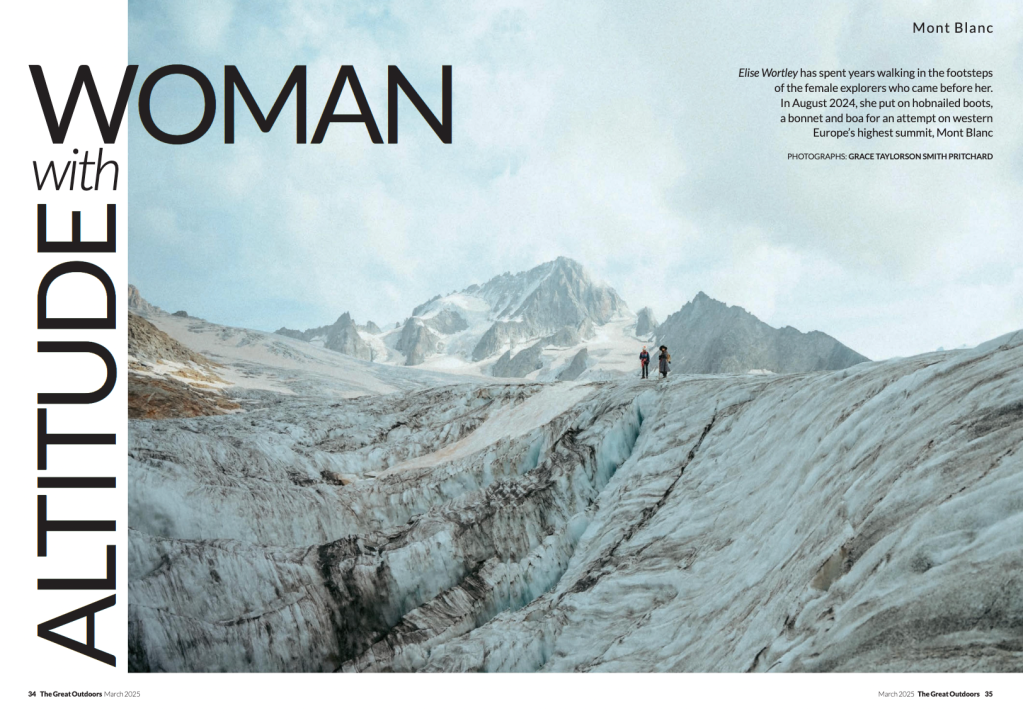
Woman with Altitude: Elise Wortley has spent years walking in the footsteps of the female explorers who came before, painstaking in her attention to the material conditions of their times – from Alexandra David-Néel in India to Freya Stark in Iran and Nan Shepherd in the Cairngorms. In August 2024, she pulled on hobnailed boots, a bonnet and boa for an attempt on Western Europe’s highest summit, Mont Blanc.
“For the modern-day mountaineer wishing to summit Mont Blanc, the recommended packing list is extensive. Full shank insulated climbing boots, a warm down jacket, a waterproof hard-shell jacket, lightweight Gore-Tex trousers, polarised sunglasses…the list goes on. My own attempt at climbing Europe’s highest peak wouldn’t involve any of this fancy kit. I would be in a unique, homemade ensemble, a replica of that worn by the first woman to climb the mountain unaided in 1838. As I waited to board the train to Chamonix, surrounded by my bags overflowing with green and blue wool plaid and a rather fetching bonnet, I genuinely wondered what on earth I’d got myself into…”
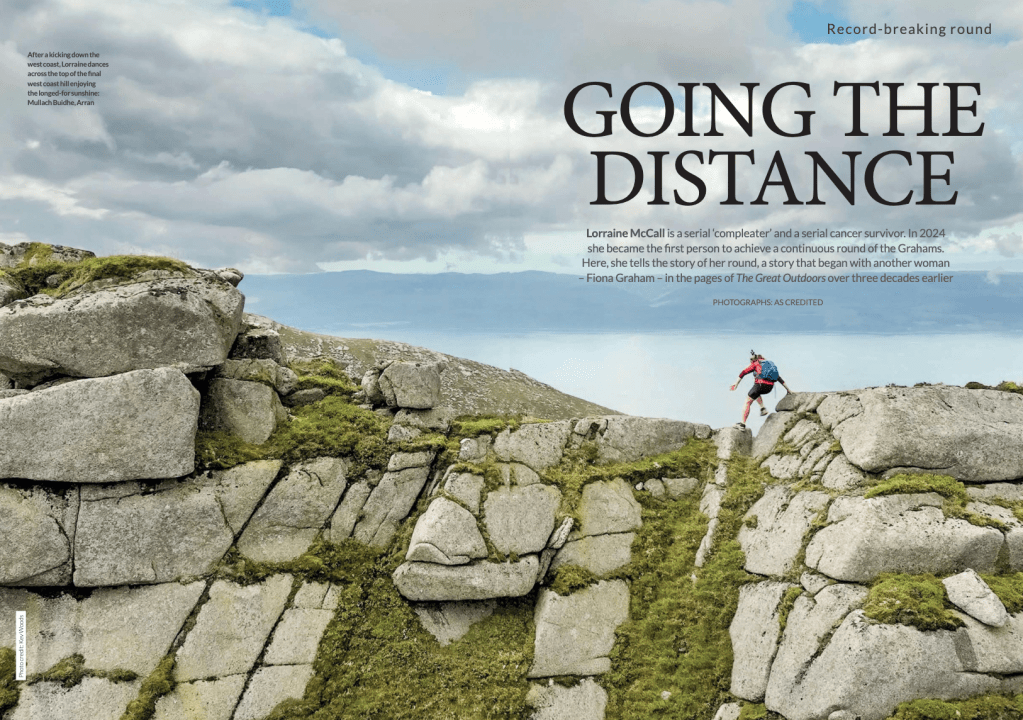
Going the distance: Lorraine McCall is a serial compleator and a serial cancer survivor. In 2024 she became the first person to complete a continuous round of the Grahams. Here, she tells the story of her round, a story that began with another woman – Fiona Graham – in the pages of The Great Outdoors decades before.
“On 5th of September 2024, I stood on top of Stac Pollaidh in brilliant sunshine, surrounded by friends. I had just completed a continuous, self-propelled round of the Grahams, biking and walking in between. I was feeling justly proud of myself. Almost 20 years ago, when I was just 40, I completed a continuous round of Munros by walking and sea kayaking in between. A decade later I did similar on my Corbett round, but by bike and sailing boat. Neither was easy, but neither came close to the Grahams in difficulty. These smaller hills are both remote and pathless, and more time was spent walking the passes and glens between than going over the tops. The conditions underfoot were harsh, sometimes treacherous. Pathless bog was the norm. Weather forecasters opined the season as one of the worst summers since records began. Rain, mist and high winds were my daily bread. Ticks and then midges were almost constant companions and, as the seasons moved on, the bracken grew stronger, thicker and higher…”
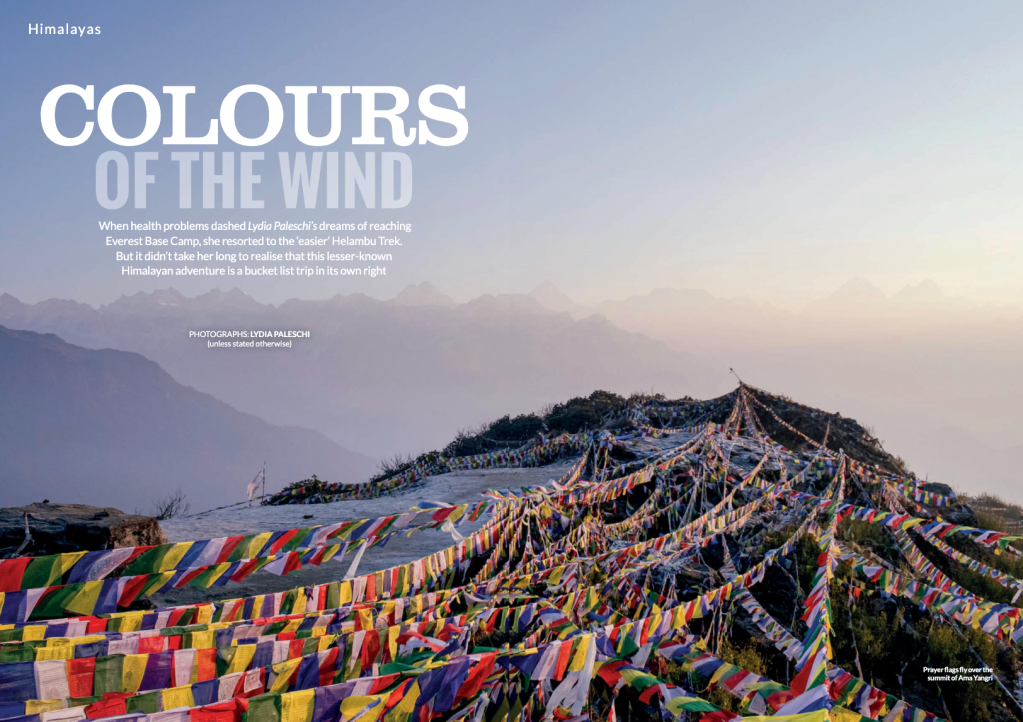
Colours of the wind: When health problems dashed Lydia Paleschi’s dreams of reaching Everest Base Camp, she resorted to the ‘easier’ Helambu trek. But it didn’t take her long to realise that this lesser-known Himalayan adventure is a bucket list trip in its own right.
“The transition was almost instantaneous. The quiet jungle gave way to an ancient alpine forest laced with steep, stony paths. I marvelled at oak trees draped in moss and lichen, standing like wise old professors among the blooming rhododendrons. The impenetrable silence evoked a sense of magic, as if these mountains held ancient secrets. At that moment, I realised that this was no longer a backup trek. I was grateful to be here, in this unique forest, instead of hiking on more popular trails towards Everest. We ascended via thousands of crumbling stone steps, tiny purple flowers scattering the path. Larger trees faded away, leaving us amidst blooming rhododendrons (Nepal’s national flower). Bees hummed soothingly as they flitted between pink, red, and white petals. These bees produce hallucinogenic honey from the pollen – a natural wonder of the region. Higher still, even the rhododendrons disappeared, replaced by sparse shrubs which clung desperately to the mountainside. Fog drifted overhead. The eerie silence persisted, without even the rustle of wind through leaves to break it. I felt another rush of gratitude for being here, in this isolated place…”
Order a single copy of this issue and get it delivered with free postage.

